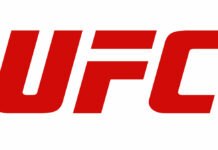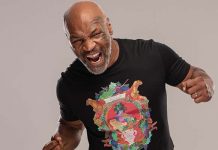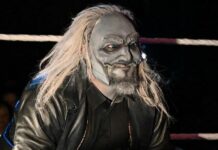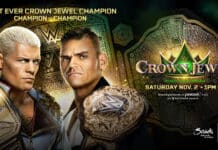What’s old is new again.
It’s a cliche, but it’s one that holds true, which is why retro and vintage shops have a market. A throwback style with a slightly updated spin to fit the times can be fresh enough to be new, but also familiar enough to have a demographic already in place.
The same can be said for professional wrestling, as through all its mutation and evolution, from the original carny circuit to smoke-filled arena to the stadium events of today, most narratives within the genre are based on some level of human psychology so the core of the stories stay the same while the elements around them morph to mold to a current period. It might’ve been Bruno battling foreign menaces in the 60s, Hogan posing with hand to ear in the 80s while Roddy Piper incited an audience, Steve Austin pummeling Vince McMahon in the 90s, or John Cena’s major baby face run of the 2000s. The point being, the dynamic of a loved hero (an anti-hero in Austin’s case) set to square off with a hated heel is primarily the WWE’s booking style.
It’s easy to understand and reaches the most basic level, which is fine because the WWE product is targeted toward the general public, not necessarily diehard fans.
On the flip side, Ring Of Honor, the once-independent league that is now owned by Sinclair Broadcasting, started in the Murphy Rec Center, a dingy sweat box in Philadelphia, in 2002. Attempting to capitalize on the void for live wrestling left by the collapse of Extreme Championship Wrestling the previous year, ROH based itself in the Philly arena and used a philosophy that made the APW’s King of The Indies show in California in 2001 one of the most influential events of the modern era. A high-flying style with a blend of the Japanese influx of the 90s that so many future wrestlers saw when they were just aspiring hopefuls.
Professional wrestling without over-the-top gimmicks, goofy storylines, or other low brow marketing maneuvers hadn’t been seen by any measurable level in the United States in a few decades. By 2002, the sports entertainment boom that brought the industry to the main stream of pop culture was littered with “shock TV” as in-ring antics reflected some of the edgy aspects of society at the time. Jerry Spring had pay-per-view specials, Howard Stern had twenty million daily listeners, and Marilyn Manson sold a few million records. Don’t get me wrong, Austin’s weekly beat downs of Vince McMahon made for great TV, but there was almost a stream of trashy angles that often get forgotten about when fans look back on the period of the 90s with nostalgic eyes. The Mae Young skits, Judy Bagwell on a pole, and Disco Inferno are just a few of the gimmicks of the wrestling surge that weren’t exactly top-notch.
Before that, the closest we got to pro wrestling as a sport in the United States was the NWA under the Jim Crockett banner. The WWF in the Rock N’ Wrestling of the 80s sold the sizzle of MTV and ice cream bars, which was fine because it was definitely entertaining programming, but it was designed to be a spectacle, not a sporting contest. For as great as ECW was, the extreme aspects weren’t trying to sell athletic competition, it was a grind house of blood and guts. Again, there’s nothing wrong with that because it certainly worked for its time and place. But, as far as a competition-based promotion, it was something that was almost a forgotten concept in America.
A cast of all-star talent helped jump start the original Ring of Honor brand and in the process, pioneered the style that became common place today. Low Ki, Christopher Daniels, AJ Styles, Samoa Joe, Homicide, Amazing Red, and others brought the ideology of work rate as a selling point to the American independent scene. Eventually, that spilled over into the X-Division when NWA-TNA started a few months later and the foundation of that in-ring presentation is ultimately what led to products like All Elite Wrestling on TNT today.
Make no mistake, without the original ROH crew at those events that shoehorned hundreds of fans into small venues, there would be no AEW today.
Ironically, it’s that ROH style that got so many athletes and the organization noticed that was also the reason the league was in an almost constant rebuilding phase since its inception. Similar to ECW, the group that it more or less replaced in terms of fan demand, ROH was too big to be small and too small to be big when it was independently owned. There was enough of a fan base that the company could tour various regions of the country, but there just wasn’t enough revenue to realistically compete with a multi-million dollar corporation. So, when WWE wanted to sign away a Paul London, Brian Kendrick, CM Punk, or others during the mid-2000s, they had no choice but to take the cash that allowed them to make a full-time living in their chosen profession. When TNA finally realized the value of exclusivity in 2007, Samoa Joe, Homicide, and other cornerstone had to exit ROH.
When Cary Silkin, who took over the company in 2004 after the Rob Feinstein scandal, struggled to stay afloat in 2011 with the increasing pressure to keep talent as TNA made an attempt to compete while WWE stockpiled prospects for its developmental system, Jim Cornette actually brokered a deal to get Silkin financial relief with the sale to Sinclair Broadcasting. In truth, it was the only move Silkin could’ve made because the previous years attempt at expansion, including the infamous HD Net show and 2-hour at pay-per-views didn’t get off the ground.
As I said in the write-up I did about New Japan management, Sinclair Broadcasting acquired ROH for the original programming on their syndicated stations, not a venture into the wrestling business. Early on it showed, as despite being owned by a broadcasting company, initial attempts at ROH live streams were disastrous and soured many fans in the process. It actually took a few years for the stain of the live stream failures to fade. Also as I discussed in the NJPW column, the combination of The Young Bucks, Cody Rhodes, and an American platform for Kenny Omega meant big business for Ring Of Honor. The renewed spotlight gave other talents like Dalton Castle, Trent, and Matt Taven a chance to make a name for themselves.
Sinclair’s decision not to re-sign The Elite stable is what paved the way for the formation of All Elite Wrestling and aside from the faction, several other ROH stars departed for the up-start promotion. A look at the current rosters of WWE and AEW will show just how many major stars were inked to a Sinclair deal in the past. Adam Cole, Roderick Strong, Kyle O’Reilly, Bobby Fish, Punishment Martinez, Chuck Taylor, and Trent are just a portion of the laundry list of stars that ROH management is tasked with trying to replace on events.
The exit of The Elite in late-2018 took much of the buzz that ROH had the few years prior with it. In the time since, sold out crowds were replaced with dismal attendance numbers. It’s not easy to replenish that level of talent and it takes time to make new stars so while photos on social media of empty seats might be alarming, it’s an expected part of the process to try to rebuild. Before the pandemic, ROH focused a lot on it’s working relationship with CMLL in Mexico, taking it as far as to have Rush win the World Championship. On one hand it makes sense because a pure lucha platform gives the company something unique to promote, but on the other hand, Rush’s strictly lucha style doesn’t really translate well to many opponents.
The main problem is, AEW took the biggest stars ROH had and most of the same style so the result was an “AEW light” type of product with Ring Of Honor. That’s not a jab at any of the guys currently working there, but the harsh reality is, there’s a specific demographic that will follow that type of in-ring style and even the most diehard fans have a “wrestling budget” so it’s very tough for ROH to try to get a slice of the pie when so much buzz was around AEW with its tenure on TNT.
While the pandemic shut down most of the world, one of the very few positives, at least for the professional wrestling genre, is it gave Ring Of Honor a chance to refresh into when it began to run events again. Currently, there are plans to revamp the Pure title, a division that has a unique set of rules for strikes and rope breaks, somewhat of a subtle nod to famous World of Sport era in England. Despite its original stint being successful, the first Pure championship was unified with the World title in 2006. The reintroduction of the Pure championship gives ROH something completely different from anything else on the America landscape, and while they don’t have the star power yet, they could have the in-ring competition to carve themselves a decent niche from the many options provided to fans with modern technology.
While the big leagues focus of TV segments and ratings on Wednesday, perhaps ROH can sell the sport of professional wrestling. What’s old is new again.
What do you think? Comment below with your thoughts, opinions, feedback and anything else that was raised.
Until next week
-Jim LaMotta
E mail [email protected] | You can follow me on Twitter @jimlamotta







